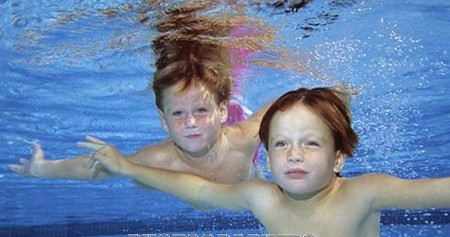After they learn to float, the teacher should pick one child at a time and, facing him and holding him under the shoulders, push him down vertically under the water. Make sure he is holding his breath. You have to know how long each individual child in your class can stay under the water. Once the child is deep down, gently let the grip go and let him come up on his own. This is the way to learn how to swim in deep water.
Don’t forget that a depth of three feet six inches, where an adult can comfortably stand, is as deep to a three-year-old child as six feet six inches is to an adult. By the same token, if a three-year-old has learned and can swim in a three-foot six-inch pool, you can easily let him swim in a six-foot six-inch depth or in a bottomless lake. Deep water is deep water, and once you have learned to swim in it, it doesn’t matter where you do it or how deep it is.
Once they can sit on the bottom of the pool, holding their breath, then they can learn to let some air out to blow a bubble. Hold them by the shoulders, push them under the water, and have them blow all the air out; then lift their heads out, having them take a big breath, and push them under the water again. If they tend to touch their eyes with their hands or shake their heads, when they come up out of the water, hold their hands firmly so they can’t. Push them up and down in a regular rhythmic movement. Nobody should be allowed to swim with their eyes shut. Without seeing, you lose your balance and sense of direction— and when you swim, you can’t afford that. Imagine crossing a busy street with your eyes shut!



